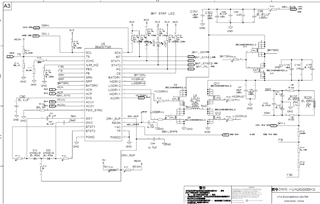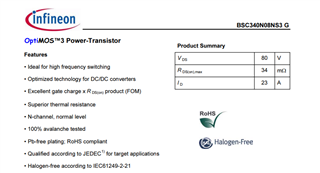Tool/software:
Hi,
I used BQ25751 for lead acid battery charging/ power path management prototype board, the nominal input voltage is 48Vdc, the charging voltage is set for 56VDC, during testing and debugging, I found the BQ25751&MOSFET were very easily damaged with a very small charging current load like 500mA.
1,Both external power supply and lead-acid battery can supply the system individually, but if I started to charge the battery by enable "charging" conditions like by plugging the temperature sensor and set the charging current to 500mA, the IC will be damaged.
2,I changed the resistor to ensure it can work within the input voltage range(12V-50V), and also changed the FB resistor to make it work as a buck battery charger, I set the external power supply to 36V, the charge voltage to 30V,we found the BQ25751 can charge the battery (reduce the number of battery cells at the same time) with different charging current.
3,I set the external DC power supply to 18V and changed the FB resistor to make it work as a boost battery charger, set the charge voltage to 27V, the BQ25751 can charging the battery with different charging current.
But if I set the charging voltage to 56V ( and set the external power supply to 48V ), the BQ25751 and MOSFETs will be damaged very easily.
I attached schematics and data log captured on damaged board for your reference.
Thanks
Kelvin

| Battery register address 0 Register value: 0x10 |
| Battery register address 0x1 Register value: 0 |
| Battery register address 0x2 Register value: 0x40 |
| Battery register address 0x3 Register value: 0x6 |
| Battery register address 0x6 Register value: 0x40 |
| Battery register address 0x7 Register value: 0x6 |
| Battery register address 0x8 Register value: 0xd0 |
| Battery register address 0x9 Register value: 0x20 |
| Battery register address 0xa Register value: 0x40 |
| Battery register address 0xb Register value: 0x6 |
| Battery register address 0xc Register value: 0xe8 |
| Battery register address 0xd Register value: 0x3 |
| Battery register address 0x12 Register value: 0xa0 |
| Battery register address 0x13 Register value: 0 |
| Battery register address 0x14 Register value: 0x8 |
| Battery register address 0x15 Register value: 0x30 |
| Battery register address 0x16 Register value: 0xd3 |
| Battery register address 0x17 Register value: 0x9 |
| Battery register address 0x18 Register value: 0xc0 |
| Battery register address 0x19 Register value: 0x4 |
| Battery register address 0x1a Register value: 0x20 |
| Battery register address 0x1b Register value: 0x80 |
| Battery register address 0x1c Register value: 0x81 |
| Battery register address 0x1d Register value: 0x40 |
| Battery register address 0x1e Register value: 0 |
| Battery register address 0x1f Register value: 0 |
| Battery register address 0x20 Register value: 0 |
| Battery register address 0x21 Register value: 0 |
| Battery register address 0x22 Register value: 0x80 |
| Battery register address 0x23 Register value: 0x2 |
| Battery register address 0x24 Register value: 0x2 |
| Battery register address 0x25 Register value: 0 |
| Battery register address 0x26 Register value: 0 |
| Battery register address 0x27 Register value: 0 |
| Battery register address 0x28 Register value: 0 |
| Battery register address 0x29 Register value: 0 |
| Battery register address 0x2a Register value: 0 |
| Battery register address 0x2b Register value: 0x8c |
| Battery register address 0x2c Register value: 0x2 |
| Battery register address 0x2d Register value: 0x45 |
| Battery register address 0x2f Register value: 0 |
| Battery register address 0x30 Register value: 0 |
| Battery register address 0x31 Register value: 0xe8 |
| Battery register address 0x32 Register value: 0x5c |
| Battery register address 0x33 Register value: 0 |
| Battery register address 0x34 Register value: 0 |
| Battery register address 0x35 Register value: 0x69 |
| Battery register address 0x36 Register value: 0x5d |
| Battery register address 0x37 Register value: 0 |
| Battery register address 0x38 Register value: 0 |
| Battery register address 0x39 Register value: 0 |
| Battery register address 0x3a Register value: 0 |
| Battery register address 0x3b Register value: 0 |
| Battery register address 0x3c Register value: 0 |
| Battery register address 0x3d Register value: 0xa |
| Battery register address 0x62 Register value: 0x2 |


